Treblinka: "Everything and nothing, all at once"
PLUS: A message to Republican gubernatorial candidate Mark Robinson
My guide looked at me and said:
What you will see will be difficult. Treblinka is everything and nothing, all at once. You will see.
The Polish countryside outside of Warsaw was flat and green. There was a slight roll in the terrain. Mostly, there were fields and farmhouses. Eventually, the fields gave way to forest, and adjacent to the road, there was an elevated berm that once carried railroad track and cars.
Treblinka does not announce itself. There are no towers, buildings, or infrastructure left behind. It appears like an apparition from out of nowhere. It is a small field flanked by woods, hidden from view. What happened there was done in secret. The site was picked because there was rail infrastructure servicing a close by quarry that was mined by Jewish slaves housed at a work camp. The work camp was called Treblinka 1, and it was connected to the death camp Treblinka 2 by the black road.
I walked on the black road today in a reverent silence, thinking about the murdered and the dead. I looked down at the stones that made the road that were laid by the hands of enslaved Jews who would be murdered. The anti-tank barricades once ringed the camp. They were described by my guide as the silent witnesses.
“They were there,” he told me.
We walked on towards the stones that stand where the evil reached its apogee.
The air was warm, but wet. There was a gentle rain falling that gave way, back and forth, in an early morning argument with a light mist. There was silence. Perfect silence, except for the bird songs, which were vivid and alive.
I stopped and closed my eyes. I breathed in deeply. There was nothing and everything at once. I was walking forward into a quiet and silent horror, where the screams that linger cannot be heard anymore from where they first sounded. I was conscious of each step.
It is hard for me to reconcile the enormity of what happened with the smallness of the physical space where it happened. The entire enterprise played out over 100 acres.
This was a secret that wasn’t. This was madness of an epic scale. This was carefully planned mass murder using the full resources and ingenuity of the state to kill. This was mechanized, systematic death. Treblinka wasn’t a work camp. It was a death camp. All who came were murdered.
The gas chambers were behind the monument below:
Treblinka, Sobibor and Belzec were the three killing camps chosen to be the secret murder sites of Poland’s Jews, who had lived there for 1,000 years. They were to be exterminated, liquidated and forgotten. The plan was called Operation Reinhard after Reinhard Heydrich, the principal architect of the “Final Solution.” He presided over the 90-minute long Wansee Conference, during which the murder of Europe’s Jews was planned.
The first transports arrived at Treblinka on June 23, 1942. The last would arrive on August 19, 1943. The record for Jews murdered in a single day was in excess of 13,000. More than 900,000 men, women, children and infants were turned to smoke.
Here is where they burned 900,000 human beings:
There were no ovens at Treblinka. The fires and stacks of bodies burned in the open. Unlike the vast Kanada warehouses at Auschwitz, where the looted possessions of the murdered were sorted, inventoried and prepared for shipment, there was just an open field at Treblinka. Vast piles of corpses lay next to vast piles of those corpses’ most cherished belongings. All of it strewn across a field of murder and madness. All of it was sent to the Reich. The gold fillings were stolen from desecrated corpses. Nothing of value was left untouched — even human hair was stolen.
Warsaw’s Jews were stripped of their property, belongings and liberty when the Nazis invaded in 1939. They were herded like animals behind the walls of Jewish ghettos that are gone now, but must always be remembered:
Treblinka is where the Jews locked behind the ghetto walls were murdered. The “shipments” left Warsaw early in the morning, and were made up of 60 railcars, each transporting at least 100 people. The railcars rolled out of Warsaw, and came to rest outside the small village of Treblinka. The houses that were there on June 23, 1942, are still there today:
Every single person who came to Treblinka stopped at this spot:
All of them. Every single person, and a billion dreams between them all.
When the Jews arrived at this spot, the end was near. Treblinka and the gas were 4.5 kilometers away. The cars were taken 20 at a time. When the gas started, the next 20 cars started rolling. This poem memorializing the staging spot explains what happened:
Above is what is remembered as the “road of death” that led to the gas chamber doors located under an enormous Star of David.
This happened. It is real. It must be remembered.
Political candidates like Mark Robinson of North Carolina who deny this crime are manifestly amoral and immoral people, who are unfit for public trust and political power. The denialists are the agents of the murderers and their abettors.
Places like Treblinka bend the mind and humble the soul.
There is a hidden place in the woods that proves evil is real. The place is called Treblinka, and it is the evidence that proves what human beings are capable of doing to one another. The denial of that evil stands apart as its own evil. It desecrates decency. It must be opposed and rebuked — everywhere, and all at once.
There is a rising fascism across the world.
Donald Trump is a fascist. His threats of vengeance, retribution and punishment should be taken seriously. His henchmen and women should be taken seriously. We must not look away ever again, and yet we are every day.
Ukraine of 2024 is Czechoslovakia in 1938.
The storm is coming.
Treblinka is where it leads.
May their memory be a blessing.



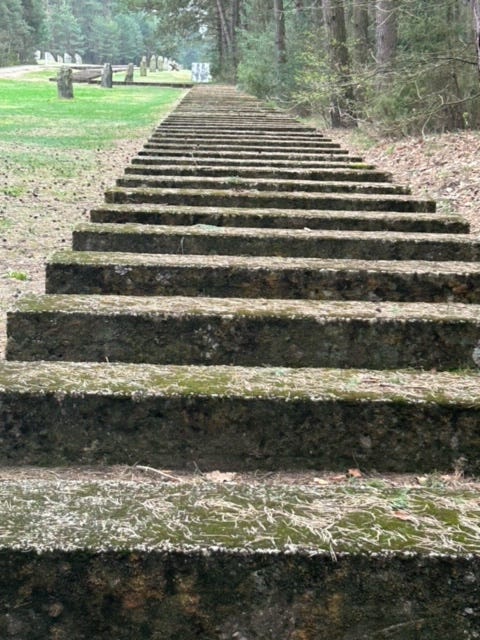
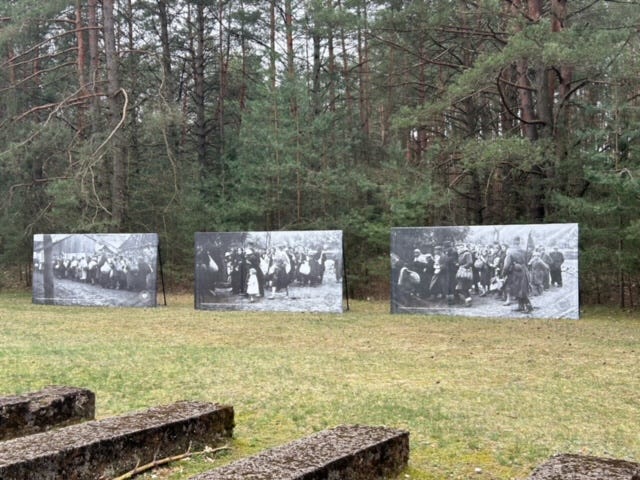
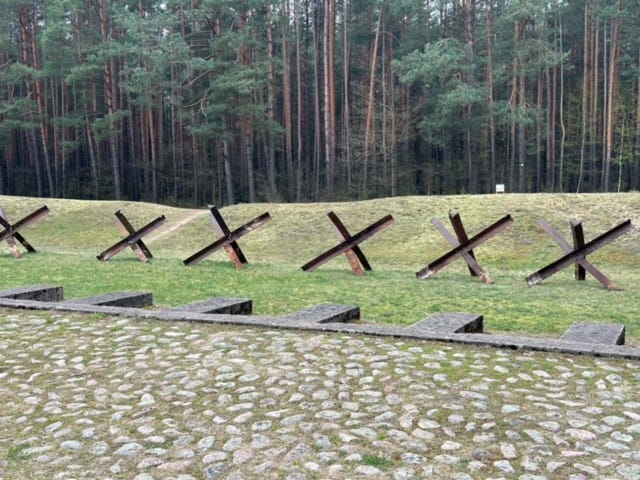

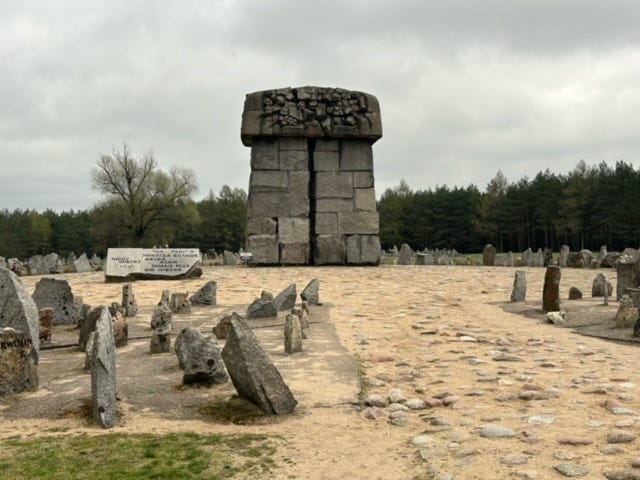
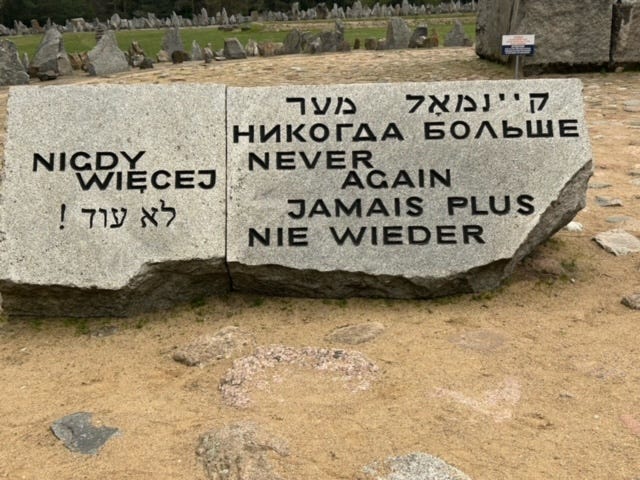
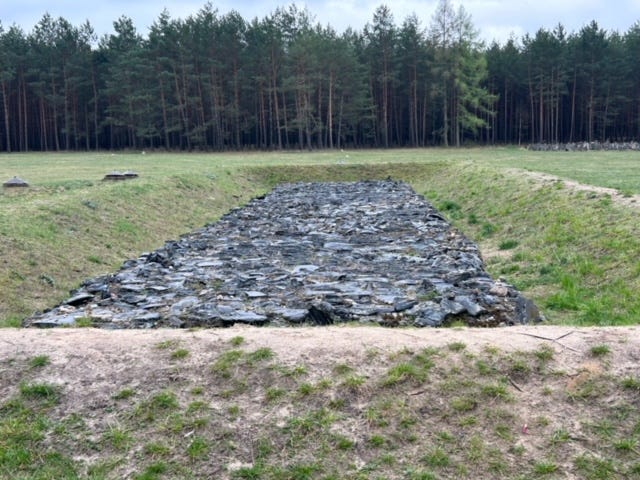
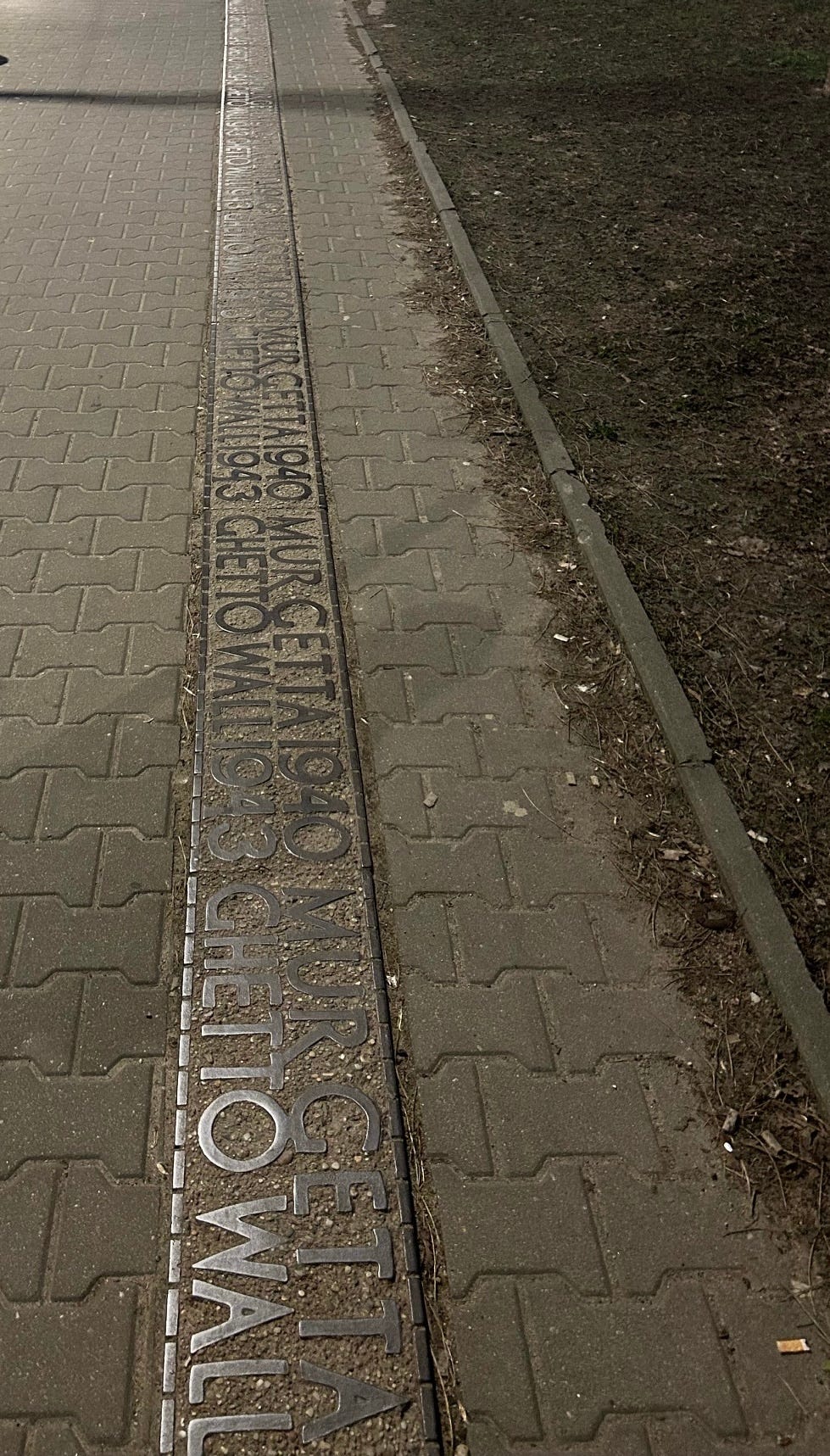
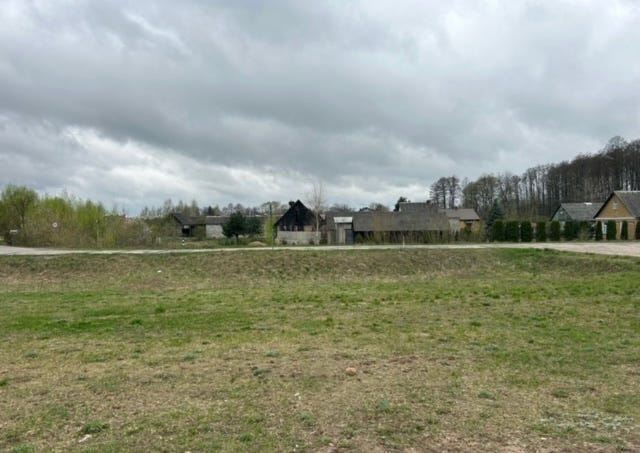
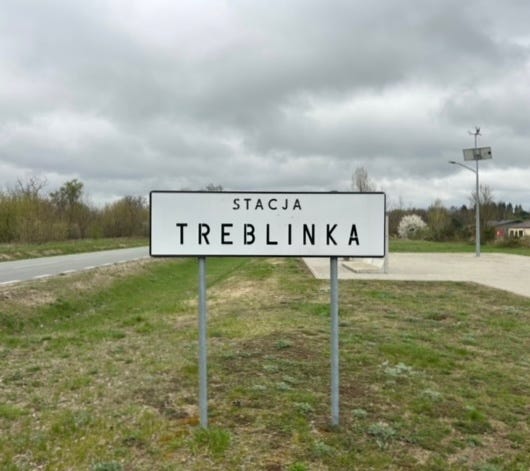
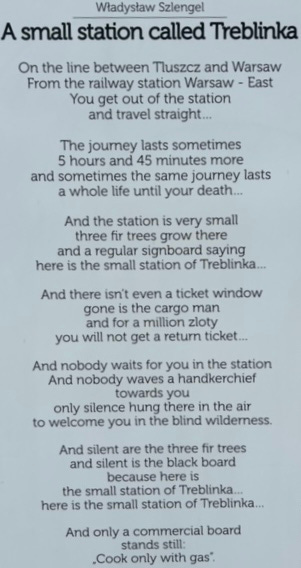
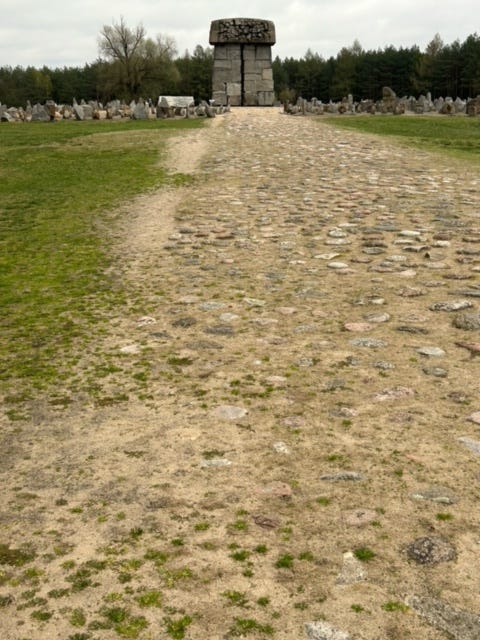
Those here in North Carolina who voted for Mark Robinson are complicit with desecration. Call them out as much as we call him out.
My grandfather grew up 10K from Treblinka.
When my 9-year-old son and I visited his village, Malkinia, in 1989, an elderly Polish couple who did not speak English, but heard the word 'Treblinka,' offered to guide us to the site. It was a two-hour walk through snowy woods to the back edge of the Treblinka memorial fields. My son and I agree-- this was one of the most profound experiences of both our lives.